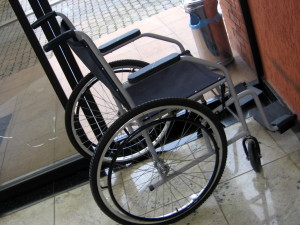 For those of us with elderly loved ones who are currently living in nursing homes or assisted-living facilities, the threat of injuries caused by nursing home abuse is all too real. But what leads staff members at these facilities to perpetrate acts of elder abuse and neglect? Often, as we have noted in previous posts, understaffing at nursing homes frequently results in patients not receiving proper levels of care. But when we think about physical elder abuse, it is more difficult for most San Diego residents to consider explanations.
For those of us with elderly loved ones who are currently living in nursing homes or assisted-living facilities, the threat of injuries caused by nursing home abuse is all too real. But what leads staff members at these facilities to perpetrate acts of elder abuse and neglect? Often, as we have noted in previous posts, understaffing at nursing homes frequently results in patients not receiving proper levels of care. But when we think about physical elder abuse, it is more difficult for most San Diego residents to consider explanations.
The possibility of nursing home abuse is abhorrent to us, but it can be difficult to understand why, exactly, it happens. According to a recent article in Forbes Magazine, one emergency room physician decided to look more closely into acts and events that prompt elder abuse.
Exploring Causes of Elder Abuse
As the Forbes Magazine article explains, Dr. Tony Rosen, an emergency room physician, often sees elderly patients who have sustained serious injuries. Many of those seniors report that they have fallen, or a caregiver who accompanies the senior to the hospital explains that the patient has suffered injuries in a fall. Given the frequency with which many older adults do suffer fall-related injuries, it can be difficult to know if any of these injuries are in fact a result of the much bigger problem of physical elder abuse. In particular, Rosen begins to worry when it is the caregiver who insists that the cause of the injury is a fall.
We do not always have clear ways to distinguish between injuries that result from accidental falls and injuries caused by elder abuse. But, as Rosen explains, we can look at information that precedes emergency room visits in order to gauge whether a caregiver could be causing harm to a patient.
Qualitative Stories Can Help to Explain Abuse
Based on a study presented at the annual Gerontological Society of America (GSA) and cited by the article, Rosen discusses a list of “acute triggers of physical elder abuse.” In general, there are certain “categories of acute precipitants” that tend to lead caregivers to perpetrate acts of physical elder abuse, which include the following situations:
- Elderly victim attempts to prevent the perpetrator from entering his or her space;
- Elderly victim demands that the perpetrator leave the space;
- Elderly victim either attempts to leave or threatens to leave (or escape);
- Perpetrator perceives a threat that the elderly victim might contact authorities to report abuse or neglect;
- Conflict concerning a romantic relationship;
- Ongoing family violence;
- Multi-generational childrearing issues becoming salient;
- Conflict concerning the perpetrator’s substance abuse issues;
- Elderly victim confronting caregiver about financial exploitation or money in general;
- Dispute between elderly victim and caregiver over theft or misuse of property; and/or
- Dispute between elderly victim and caregiver about “minor household issues.”
By and large, many of the triggers look like those that also prompt domestic violence, Rosen suggests. Having a better understanding of why elder abuse happens, he intimates, may be able to help us recognize situations in which a senior is not actually safe with his or her current caregiver.
Do you have questions or concerns about nursing home abuse in a Southern California facility? An experienced San Diego nursing home abuse attorney can help. Contact the Walton Law Firm today to learn more about how we can assist you.
See Related Blog Posts:
 Southern California Nursing Home Abuse Lawyer Blog
Southern California Nursing Home Abuse Lawyer Blog








